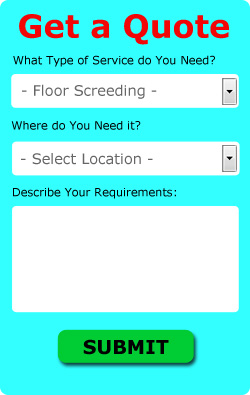Floor Screeding Botley Hampshire (SO30): Whether you're renovating a property or basement, dealing with an uneven or damaged floor, or contemplating underfloor heating installation in your Botley home, it is essential to enlist the skills of a floor screeding professional. Screeding is a process of creating a level, smooth surface over a concrete subfloor. This provides a solid foundation for the flooring material you have chosen. This vital process guarantees a durable and long-lasting finish for the entire floor structure, ensuring its resilience and high quality. By enlisting the assistance of a professional floor screeder, you can have full confidence in attaining an impeccable and long-lasting floor surface that caters to your exact needs.
FLOOR SCREEDING CONTRACTORS BOTLEY
Having all the experience and knowledge to help you achieve a perfect floor in whatever size or shape of room you're working on, a good screeding specialist in Botley is the ideal choice for your floor screeding project. After a painstaking evaluation of your screeding project, they will be able to advise you on which method of laying is most suitable for your situation, and which is the ideal type of screed.
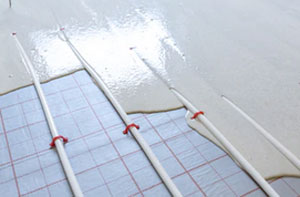
They'll additionally assess if a structural engineer is needed to ensure any point loadings, load bearing and flex strength are met as set out in the building regulations.
A qualified and skilled work force is imperative for a successful result and will extend the lifespan of your floor by making use of the right type of screed for the intended purpose of your room. Choosing the appropriate screeding materials and the method of installation is vital if you want a durable and quality finish for your floor surface.
Before choosing a screeding contractor from those operating in the Botley area, ask to what standard of finish they are basing their price quote, and also make sure that you get multiple quotations. For domestic properties a quotation will usually be given for a Surface Regularity (SR) level of SR1 or SR2. SR1 is the highest level, and while SR2 and SR3 might seem more cost-effective initially, they don't guarantee a totally even or flat floor surface. Any errors in the final screeding can cause problems in laying flooring owing to flat spots, indentations, ridges in the floor surface.
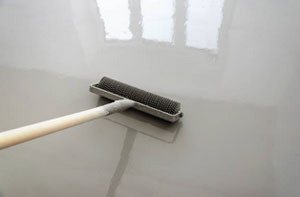
British Standards BS8204 lays down the regulations and guidelines that all Botley screeding companies is obliged to follow, and if using specialist screeding solutions, (Cemfloor, Flowcrete, Gypsol etc), they should be accredited by the manufacturers as being trained and skilled in their use. The training and testing of a screeding company by a manufacturer is underlined through this accreditation scheme, and offers assurances of safe working practices and reliability on any project involving their materials.
Commercial screeders in Botley will usually undertake floor screeding projects in shops, hospitals, warehouses, factories, salons and schools.
TYPES OF SCREED
Standard Screeds - This is perfect for regular residential use and is a mix of sand and cement. 5 parts sand to 1 part cement is the usual mix for standard flooring screeds. This five to one ratio standard screed will set hard at a rate of one millimetre per day after laying.
Industrial and Heavy Duty Screed - Where traffic levels are high or heavy loading of the floor is required, heavy duty screeds allow for maximum strength and durability.
Fast Drying and Advanced Drying Screeds - If you need to move forward urgently with the flooring owing to time limitations, this screed dries more speedily than standard flooring screeds. Most of the fast drying screeds are fibre reinforced and are perfect for a whole host of flooring projects where the faster curing rate of 3-7mm is advantageous.
Fibre Reinforced Screed - Used mostly with underfloor heating systems and is the preferred choice in such projects. The improved strength and flexibility offered by the fibres within the screed mix help protect the flooring from shrinkage and cracking due to heat. It dries out at an identical rate to a standard screed, at about one millimetre per day.
Self-Levelling or Liquid Screeds - Used to produce a high quality finish, especially in SR1 levels of screeding, by a latex and cement solution. The self-levelling compound provides a smooth and level surface over a damaged floor or rough substrate to enable all flooring materials to be laid. These can be as little as one millimetre in depth, and due to the latex polymers, will still provide high strength.
Polymer Screeds - An extremely high strength flooring solution where a reduced screed thickness is necessary. Manufacturer's guidelines for drying times differ across the various product ranges.
SCREEDING PREPARATION AND INSTALLATION
Screeding companies will have to fully prepare all areas before proceeding with any other work so as to ensure a hard wearing and quality screed flooring. Any debris, paint, grease and oil on the original floor level can affect the bonding of the screed, and must be eliminated.
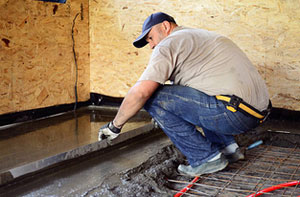
If any products are used during this stage it is vital to make sure that no residues of detergents, soaps or other cleaning products are left on the floor surface and it is permitted to dry out naturally. If screeding over a stone or cement floor then all cracks should be mended to stop them from "travelling" through the screed layer and resulting in deviations on the finished floor surface. A reputable Botley screeding company will address such issues during the site survey and make sure that all preparations are complete before applying the next steps in the screeding process.
A DPM (damp proof membrane) will be installed once the preparation work has been concluded to stop ground dampness affecting the screeding and floor materials. The DPM is made from thick polythene sheet and various layers could be used to act as a moisture barrier and air insulating layer for the screed.
If your home is located in a place where radon gas is found a supplementary barrier layer is required to stop radon gas from getting through. If radon gas occurs in severe doses then a complete extraction and ventilation system might be needed beneath the screed which will remove any gases that are seeping in from the ground.
The final stage of surface preparation is the spraying or painting of a sealer or primer. These sealers and primers will make certain that the screed bonds successfully to the floor base and help create a good quality finished floor. These materials need professional tradesmen to apply them in the correct ratios by using bespoke equipment, such as airless sprays.
If required, this is the time that underfloor heating can be installed and laid out in the correct manner. Insulation panels can be positioned and the heating pipes and cables will be firmly fastened so that there is no movement whilst the screed is applied. When properly installed an underfloor heating system is an excellent way to warm up a room and good quality screeding retains its heat, creating an even level of warmth right across the floor.
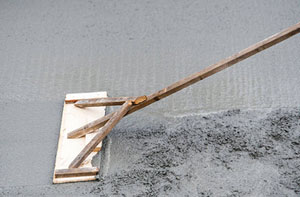
Of course, if you aren't putting in under floor heating, you can just ignore this step and apply the screeding. Your intended use of the room will assist your screeding specialist on which sort of floor screed is perfect for your requirements. Bear in mind that even quick drying screeds have a minimum of 24 hours before you can walk over any laid surface and at least 3 days before any flooring can be fitted. If you are hoping to wind up with a nicely finished and hard-wearing floor surface you should follow the manufacturer's guidelines with regards to standard and heavy duty screeds where this timescale will be increased.
As soon as the screed has hardened it can be quality checked to confirm the SR standard. Using a 2 metre straight-edge the floor surface is checked for any deviations, dips and ridges in the screed surface.
- SR1 - SR1 is the best quality and permits only 3mm of disparity from the straight-edge.
- SR2 - The normal standard flooring in industrial and commercial builds is normally SR2 and has a maximum deviation of 5 millimetres across the entire screeded floor.
- SR3 - If the deviation is 10mm or less the quality of the screeding is categorised as SR3 and is highly suitable for utility and garage areas.
If your screeding has been laid with particular loading in mind then a qualified structural engineer is going to be needed to carry out the tests. This test will ascertain the strength of the screeded surface and the viability for its proposed use. A "drop hammer test" is performed on different areas of the screed and the results noted. Any screed flooring that has load bearing requirements must be approved by a trained structural engineer observing the BS8204 regulations. (Tags: Floor Screed Botley, Floor Screeding Services Botley, Screeding Botley, Floor Screeding Botley).
Floor screeding services are available in Botley and also in nearby places like: Durley Street, Whiteley, Moorgreen, Hedge End, Horton Heath, Bursledon, Curdbridge, West End, Waltham Chase, Shirrell Heath, Sarisbury, Burridge, Shedfield, Swanwick, Knowle, Wintershill, Boorley Green, Durley Mill, and in these postcodes SO30 2DZ, SO30 2UE, SO30 2UA, SO30 2SL, SO30 2LA, SO30 2BZ, SO30 2FT, SO30 2TX, SO30 2GW, and SO30 2DL. Local Botley floor screeders will likely have the postcode SO30 and the dialling code 01489. Checking this out will confirm you access locally based floor screeding. Botley homeowners are able to benefit from these and various other flooring related services. Click the "Quote" banner to make enquiries and obtain estimates for floor screeding.
Damp Proof Membranes
In construction, a DPM (damp proof membrane) is employed to prevent moisture from seeping into walls, floors, and foundations. Acting as a barrier to combat rising damp - which can cause long-term damage to buildings in Botley - it is commonly made of plastic or polythene. To protect a property from moisture-related issues like mould, structural degeneration, and decay, installing a DPM is vital.
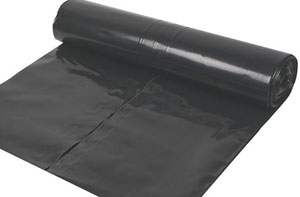
Not only are DPMs generally employed in new buildings, but they can also be installed as part of renovation projects. To prevent moisture penetration, they are usually laid under concrete floors or embedded within walls. To avoid issues like warped wooden floors, peeling paint, and damp patches, it is important to maintain a dry interior.
Various types of DPMs are available, depending on the specific requirements of a property. While some DPMs offer the convenience of self-adhesion, others require a bonding agent to secure them in place. The selection of a suitable membrane will rely on factors such as the potential for moisture damage, the location of the building, and the form of construction.
A damp proof membrane offers a simple but effective solution to moisture concerns. It forms a long-lasting barrier that protects buildings and homes in Botley from the harmful effects of damp and moisture ingress. Regardless of whether you're constructing a new house in Botley or renovating an older one, installing a DPM is essential for maintaining a protected and dry structure. (Damp Proof Membranes Botley)
What Does Screeding Do?
Within construction projects, screeding serves several critical purposes:
- Improving Sound and Thermal Insulation.
- Surface Protection.
- Support for Underfloor Heating Systems.
- Structural Integrity and Stability.
- Compatibility with Floor Finishes.
- Smoothing and Levelling.
- Subfloor Corrections.
- The Even Distribution of Loads.
All in all, the creation of a stable, level and durable floor surface is significantly influenced by the role of screeding. By ensuring a solid foundation, it supports the floor finish in maintaining its aesthetics and quality, and enduring the demands of daily use for many years to come.
Screed Floor Sealing Botley
The durability of screed floors in Botley is protected and enhanced through the crucial process of sealing, which is generally carried out by flooring specialists. A level, smooth surface perfect for flooring is created by screed, which is a combination of cement and sand. Sealing is recommended, however, to maintain its integrity and appearance. Providing a protective barrier against stains, moisture and wear, a high-quality sealant will be applied by a professional to penetrate the screed.
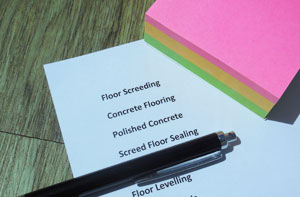
A thorough cleaning of the screed floor to remove any debris, dirt or dust marks the beginning of the sealing procedure. Once dry and clean, the floor receives an even application of sealant. This ensures the sealant covers every area of the floor, filling in any tiny cracks or pores. To form a long-lasting and durable protective layer, the sealant typically needs time to dry and completely cure.
Sealing your screed floor not only improves its appearance but also extends its lifespan. The sealant provides the floor with a smooth, polished finish, making it simpler to maintain and clean. Additionally, it prevents damage from heavy footfall and spills, making it a good investment for residential and commercial properties alike. (Screed Floor Sealing Botley)
Screed Floor Removal Botley
Screed floor removal is the practice of removing existing screed from a surface. The necessity often arises when upgrading or renovating a floor. To effectively break up and remove the layer of screed, specialised equipment and techniques are indispensable in the removal process. This allows for the preparation of the surface for new flooring material or other alterations. Expert professional contractors in screed removal meticulously eliminate the old screed, guaranteeing efficiency and safety, and allowing the floor to embark on a fresh journey, whether for design alterations, repairs or upgrades. (50505 - Screed Floor Removal Botley)
Botley Screeding Related Tasks

There are a whole host of tasks that can be conducted by your local Botley floor screeding specialist including kitchen floors, screed floor removal in Botley, decorative floor screeding, acoustic flooring solutions, final floor finishes, lightweight screeding in Botley, polished concrete flooring, floor screed testing, wet room floors, fibre reinforced floor screeding, floor resurfacing in Botley, screed reinforcement, monolithic screeding in Botley, polished screed floors, screed pump hire, concrete toppings, pumped screeds in Botley, concrete floor moisture testing services in Botley, waterproof floor screeding, garage screeding, thin bed floor screeding, concrete pumping, bonded screed, bathroom floors, subfloor repair, conservatory screeding in Botley, substrate floor preparation in Botley, bonded concrete floor screeding, external screeding, industrial floor screeding, and more floor screeding tasks. These are just some of the duties that are conducted by people specialising in screeding. Botley professionals will keep you informed about their full range of floor screeding services.
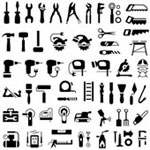
Other Trades Botley: Not surprisingly, when you're doing home improvements and repairs in Botley, you'll likely be in need of all kinds of different tradesmen and aside from floor screeding in Botley, you might additionally need a roofing contractor in Botley, laminate flooring in Botley, partition wall installation in Botley, a carpenter in Botley, a stonemason in Botley, cleaners in Botley, an underfloor heating specialist in Botley, a carpet fitter in Botley, rubbish removal in Botley, a flooring specialist in Botley, a home improvement expert in Botley, dry lining in Botley, an electrician in Botley, and several other different Botley tradesmen. Simply click the highlighted links to submit enquiries and get price quotes.
Floor Screeding Near Botley
Also find: Durley Mill floor screeding, Wintershill floor screeding, Waltham Chase floor screeding, Burridge floor screeding, Durley Street floor screeding, Swanwick floor screeding, Sarisbury floor screeding, West End floor screeding, Shedfield floor screeding, Moorgreen floor screeding, Bursledon floor screeding, Hedge End floor screeding, Curdbridge floor screeding, Knowle floor screeding, Shirrell Heath floor screeding, Whiteley floor screeding, Horton Heath floor screeding, Boorley Green floor screeding and more. All these localities are catered for by firms who do screeding. These competent professionals, by virtue of their skills and expertise, are capable of delivering the best quality flooring services. Whether it’s for commercial or residential properties, they are proficient in screeding and make sure that the project is completed to the highest possible standards. By simply clicking here, local home and property owners can obtain screeding quotes.
More: Screeding Contractors, Floor Screeding, Flooring Contractors, Decorative Screeding, Cheap Floor Screeding, Floor Screeding, Floor Screeding, Commercial Screeding, Flooring Contractors, Cheap Floor Screeding, Cheap Floor Screeding, Decorative Screeding, Floor Levelling Services, Screeding Specialists, Cheap Screeding, Screeding, Screeding, Residential Screeding, Coloured Screeding, Screeding Companies, Coloured Screeding, Cheap Screeding, Screed Floors, Self-Levelling Screeds, Screeding Specialists, Decorative Screeding, Floor Screeding, Screed Flooring, Screed Floors, Floor Levelling, Floor Levelling, Screeding, Cheap Floor Screeding, Screeding Services, Driveway Installers, Concrete Driveways, Driveway Builders.
Floor Levelling Botley - Floor Screeding Quotations Botley - Floor Screeding Near Me - Floor Screeding Contractors Botley - Screeding Botley - Screeder Botley - Industrial Screeding Botley - Floor Screed Companies Botley - Floor Screeding Botley

